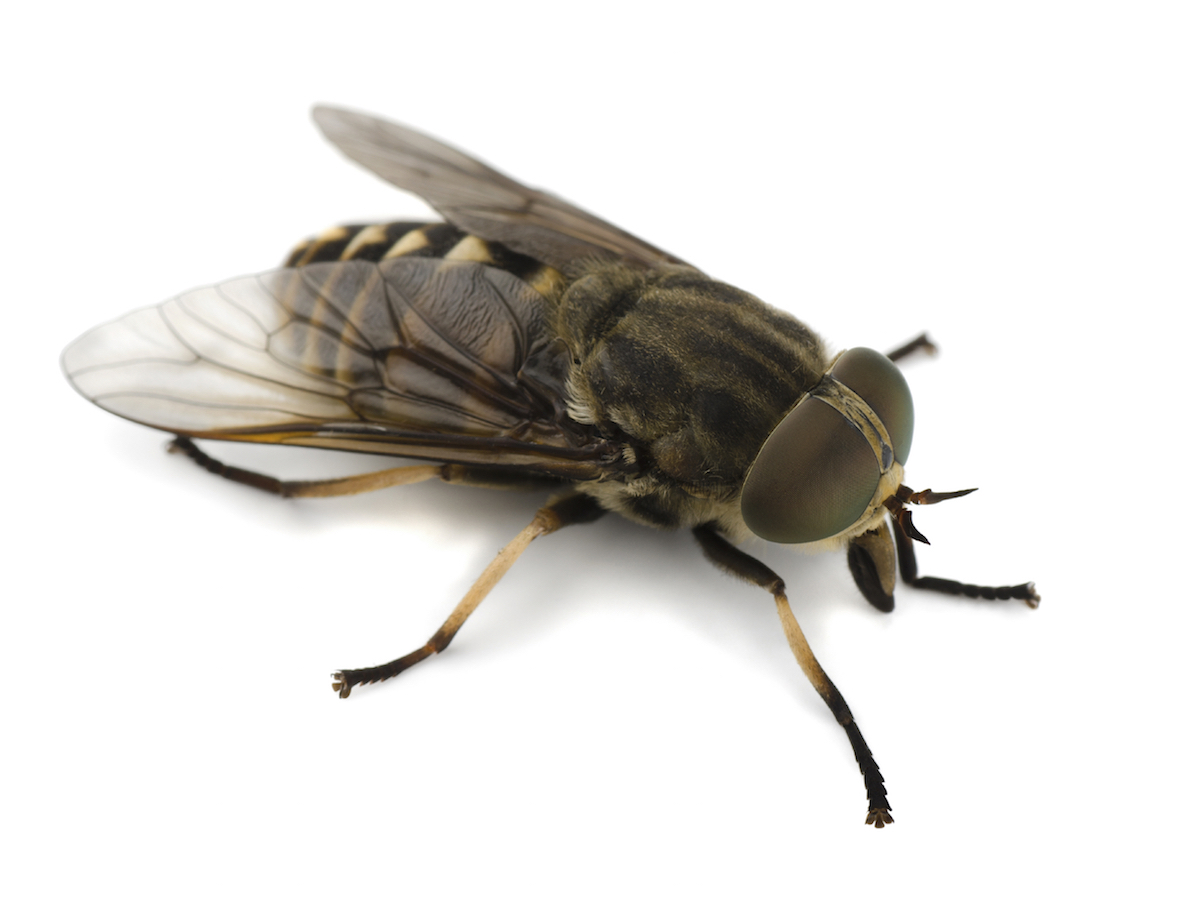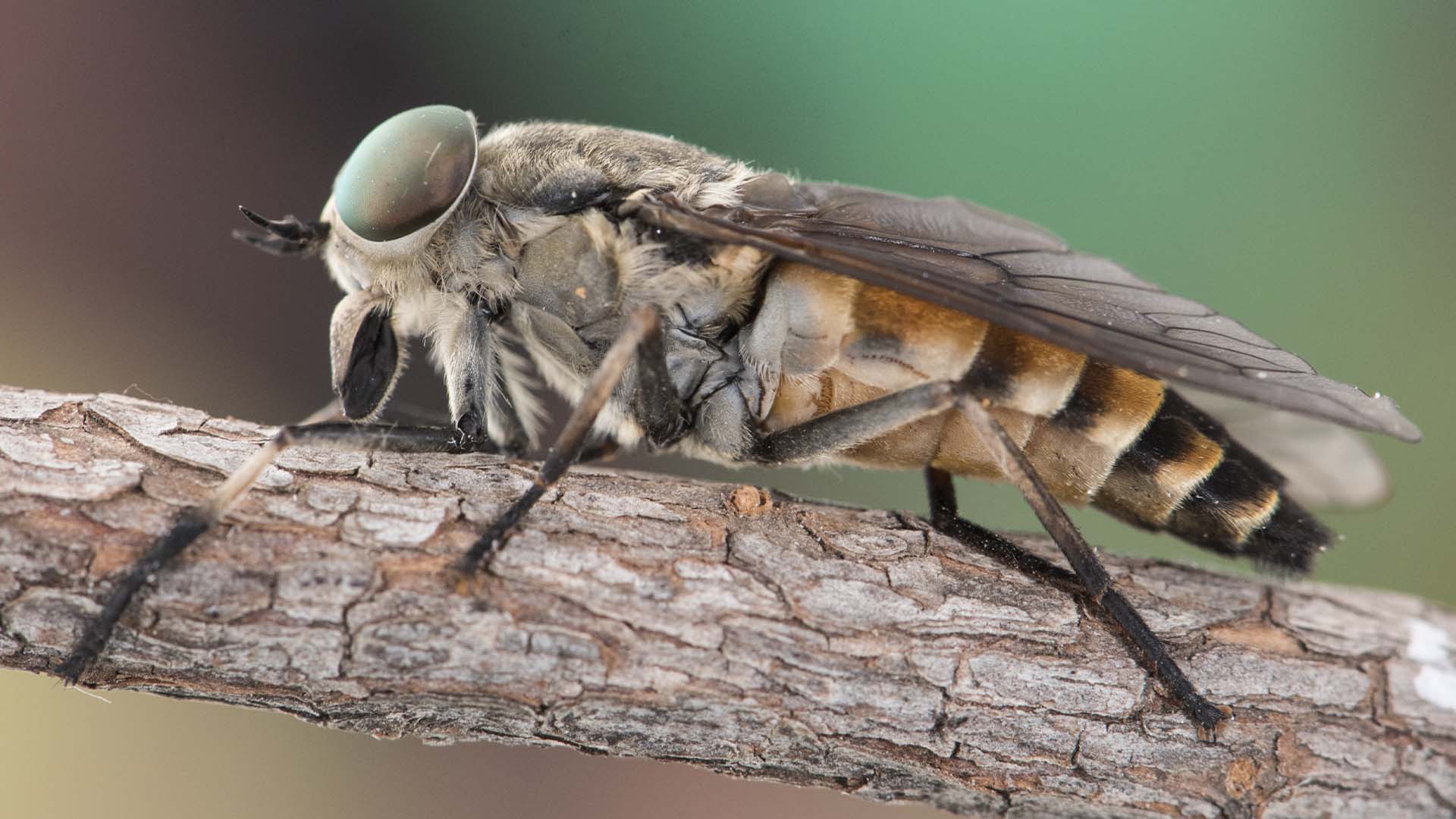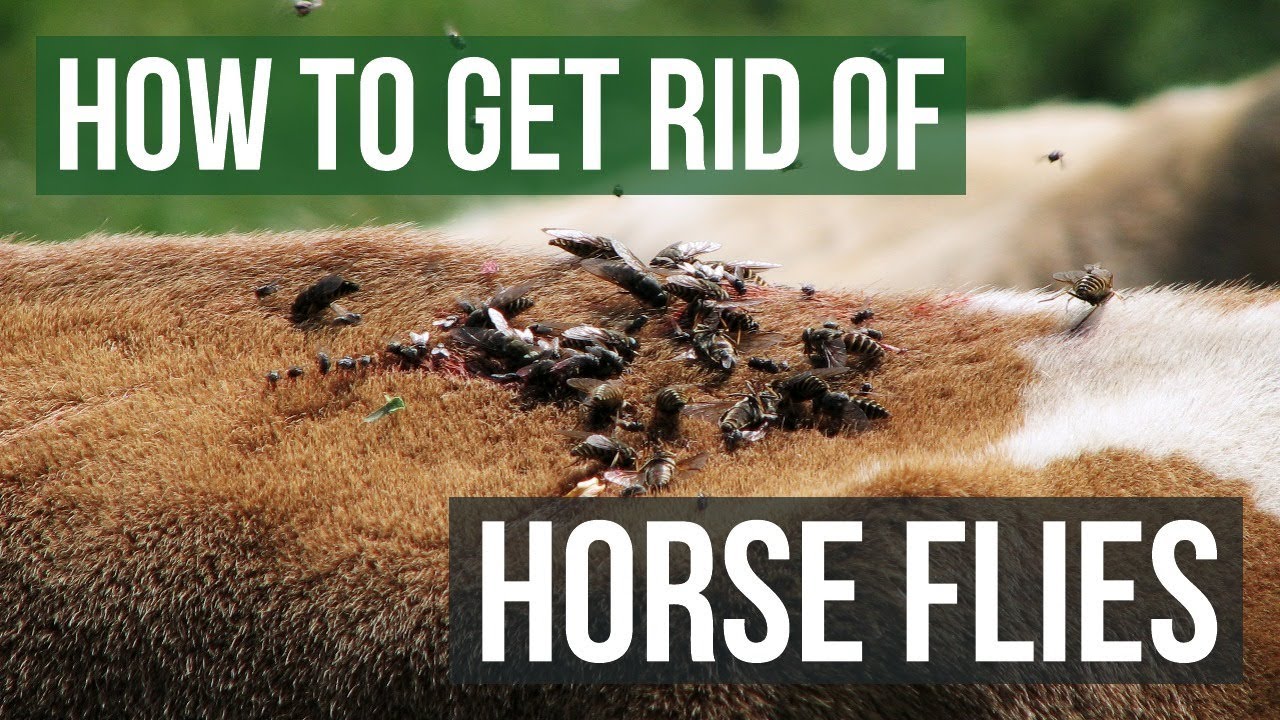Horse flies can be a real nuisance. They bite painfully and disturb outdoor activities.
Horse flies are not just annoying; they can also pose health risks to both humans and animals. These pests thrive in warm, damp areas, making them hard to avoid in certain environments. Their bites can cause allergic reactions and infections.
Understanding how to get rid of horse flies effectively is essential for maintaining a comfortable and safe outdoor space. In this guide, we will explore practical methods to eliminate these pests. This will help you enjoy your time outdoors without the constant annoyance of horse flies. Let’s dive into effective solutions to keep your surroundings horse fly-free.

Credit: www.pestworld.org
Recognizing Horse Flies
Horse flies can be a real nuisance, especially during the warmer months. Understanding how to recognize them is the first step in getting rid of them. These pests are often mistaken for other types of flies, so it’s important to know their distinct features.
Appearance
Horse flies are larger than common house flies. They can grow up to an inch long. Their bodies are usually dark and hairy. Horse flies have large, compound eyes that often have colorful patterns. This feature makes them stand out. Their wings are clear or slightly cloudy, with no distinct markings.
Behavior
Horse flies are known for their painful bites. They feed on the blood of mammals, including humans. You will often find them near water sources. They prefer humid environments. Horse flies are most active during the day. They are strong fliers and can travel long distances in search of a host.
Identifying Horse Fly Habitats
Horse flies can be a nuisance for both humans and animals. Knowing where they live helps in getting rid of them. Identifying their habitats is the first step in controlling their population. Let’s explore their common breeding sites and feeding zones.
Breeding Sites
Horse flies lay their eggs in moist areas. They prefer places near water bodies. Ponds, lakes, and marshes are common sites. Rotting vegetation and wet soil also attract them. These sites provide the perfect conditions for their larvae to thrive.
Feeding Zones
Horse flies feed on blood. They are often found near livestock. Horses, cattle, and other large animals are their main targets. They also bite humans if given the chance. Look for them in fields, barns, and stables. These areas provide easy access to their food sources.
Preventing Horse Flies
Horse flies can be a nuisance for both humans and animals. Taking steps to prevent them can save you from many bites and discomfort. Here are some effective ways to keep horse flies at bay.
Environmental Control
Environmental control is key to reducing the number of horse flies.
- Remove standing water – Horse flies breed in moist areas. Ensure there are no stagnant water bodies around.
- Maintain cleanliness – Keep your surroundings clean. Remove animal waste and uneaten food promptly.
- Use fly traps – Set up fly traps around your property. These can capture and reduce the fly population.
Protective Measures
Protective measures can help you and your animals avoid bites.
- Wear protective clothing – Long sleeves and pants can prevent horse fly bites.
- Use insect repellents – Apply insect repellent on exposed skin and clothing.
- Cover animals – Use fly sheets and masks for horses. These can prevent flies from biting them.
By following these steps, you can significantly reduce the presence of horse flies and protect yourself and your animals from their painful bites.

Credit: www.youtube.com
Using Natural Repellents
Horse flies can be a real nuisance. Luckily, there are natural ways to keep them at bay. Natural repellents are safe for both humans and the environment. Here are some effective methods using essential oils and herbal remedies.
Essential Oils
Essential oils are a popular choice for repelling horse flies. They are easy to use and have a pleasant aroma. Here’s a list of effective essential oils:
- Eucalyptus Oil: Known for its strong scent, it drives horse flies away.
- Lavender Oil: Not only does it smell good, but it also keeps horse flies at bay.
- Tea Tree Oil: A powerful repellent with multiple uses.
- Peppermint Oil: Its refreshing scent is a deterrent for horse flies.
To make a repellent spray, mix 10-15 drops of essential oil with water. Shake well before use and spray on skin or areas where horse flies are a problem.
Herbal Remedies
Herbal remedies are another natural way to repel horse flies. You can use these herbs in various forms like sprays, sachets, or planted around your home.
| Herb | How to Use |
|---|---|
| Basil | Plant basil around your home or make a spray using boiled basil leaves. |
| Mint | Mint leaves can be crushed and rubbed on the skin or made into a spray. |
| Rosemary | Use rosemary oil or plant it near outdoor areas to keep flies away. |
These herbs not only repel horse flies but also add a pleasant fragrance to your surroundings.
Applying Chemical Solutions
Getting rid of horse flies can be a tough task. One effective way is by using chemical solutions. These solutions target the flies directly and can provide quick results. Let’s explore some of these chemical methods.
Insecticides
Insecticides are a common method to kill horse flies. They contain chemicals that are harmful to flies. You can find them in spray or powder form. When using insecticides, follow the instructions on the label. This ensures safety and effectiveness. Wear protective clothing to avoid skin contact. Keep pets and children away during application.
Commercial Sprays
Commercial sprays are another option to consider. These sprays are designed to repel or kill horse flies. They are easy to use and widely available. Some sprays are specific for outdoor use. Others can be used on animals directly. Read the label to know the best use of each spray. Apply the spray to areas where flies are a problem. Reapply as needed for continued protection.

Credit: www.dynatrap.com
Implementing Physical Barriers
Implementing physical barriers is a key strategy to get rid of horse flies. Physical barriers prevent these pests from biting you or your animals. They act as a shield, reducing the risk of bites and infections. Let’s explore some effective methods under this strategy.
Fly Traps
Fly traps are a practical way to catch and reduce horse flies. These traps attract flies using bait or light. Once the flies enter, they cannot escape. Place fly traps around areas where horse flies are common. This includes barns, stables, and outdoor gathering spots. Regularly check and empty the traps to maintain their effectiveness.
Protective Gear
Wearing protective gear is essential to avoid horse fly bites. Long-sleeved shirts and pants provide a physical barrier. For added protection, use netted hats or face masks. These prevent flies from reaching your skin. Also, consider using fly sheets for horses. Fly sheets cover the horse’s body, reducing the chances of bites. Choose breathable materials to keep your animals comfortable.
Maintaining Livestock Hygiene
Keeping your livestock clean is crucial for getting rid of horse flies. A clean environment reduces the chances of horse flies breeding and thriving. This section will cover three important aspects: Regular Cleaning, Proper Waste Disposal, and other essential practices.
Regular Cleaning
Regular cleaning of livestock areas is essential. Horse flies are attracted to dirty and damp places. Clean the barns, stables, and pens daily. Remove any spilled feed and water. This will help keep the area dry and less appealing to horse flies.
Use proper cleaning tools. A strong broom, shovel, and hose can help. Scrub the floors and walls with disinfectants. This removes any larvae or eggs that may be present. Ensure all nooks and crannies are clean. Even small amounts of dirt can attract flies.
Proper Waste Disposal
Proper waste disposal is vital. Horse flies are drawn to manure and waste. Remove manure from the area daily. Use a wheelbarrow or cart to transport the waste. Dispose of it in a composting area far from the livestock.
Keep the composting area covered. This prevents flies from laying eggs in the waste. Use a tarp or proper compost bin covers. Turn the compost regularly to speed up decomposition. This reduces the chances of flies breeding.
Dispose of other waste properly too. Old feed, bedding, and other materials should be removed. Keep the area tidy and free from waste that can attract flies.
| Task | Frequency |
|---|---|
| Cleaning barns and stables | Daily |
| Removing manure | Daily |
| Composting waste | Regularly |
Maintaining livestock hygiene requires diligence. Regular cleaning and proper waste disposal are key. Keep your livestock areas clean and free of waste to reduce horse flies.
Monitoring And Follow-up
Horse flies can be persistent pests. Once you have implemented initial control measures, it is essential to monitor the situation and make necessary adjustments. Consistent monitoring and follow-up ensure that your efforts are effective and help you stay ahead of any potential infestations. Below, we will discuss the key steps to maintain control over horse flies.
Regular Inspections
Begin with regular inspections of your property. Check areas where horse flies are likely to breed and rest. This includes:
- Near water sources
- Barns and stables
- Shaded areas
During inspections, look for signs of horse flies such as larvae, pupae, or adult flies. Use a flashlight to inspect dark areas thoroughly. Keep a log of your findings. This helps in tracking the effectiveness of your control measures.
Adjusting Strategies
Based on your inspection results, you may need to adjust your strategies. If you notice an increase in horse fly activity, consider:
- Reapplying insecticides
- Setting up additional traps
- Improving sanitation practices
Reevaluate your environment. Horse flies thrive in certain conditions. Addressing these conditions can significantly reduce their population. For example, ensure that water sources are properly managed to prevent breeding.
Additionally, consider natural predators. Birds, bats, and certain insects can help control horse fly populations. Encouraging these predators can be an effective long-term strategy.
| Action | Frequency |
|---|---|
| Inspection | Weekly |
| Traps | Bi-weekly |
| Sanitation | Daily |
By maintaining regular inspections and making necessary adjustments, you can effectively manage horse flies. Stay vigilant and proactive in your efforts to ensure a horse fly-free environment.
Frequently Asked Questions
What Attracts Horse Flies To Humans?
Horse flies are attracted by movement, body heat, and carbon dioxide. They are drawn to dark colors and shiny surfaces.
How Can I Prevent Horse Fly Bites?
Wear light-colored clothing, use insect repellent, and avoid heavily wooded areas. Consider using physical barriers like nets.
Are Horse Fly Bites Dangerous?
Horse fly bites can be painful and cause swelling. They can sometimes lead to allergic reactions or infections.
What Is The Best Way To Kill Horse Flies?
Use fly traps, insecticides, or natural predators like wasps. Keep areas clean to reduce breeding sites.
Conclusion
Getting rid of horse flies can be challenging, but it’s possible. Use traps, natural predators, and repellents. Keep areas clean and free of waste. Wear protective clothing outdoors. Apply insect repellent on skin and clothing. Try these methods consistently. They help reduce horse fly numbers.
Enjoy a more comfortable outdoor experience. Stay persistent, and you’ll see results.




